
Facsimile Magazine, Published by Haoyan of America. Volume Four, Number Four, 2010. ISSN 1937-2116.
Facsimile April 2010


Facsimile Magazine, Published by Haoyan of America. Volume Four, Number Four, 2010. ISSN 1937-2116.

The atomic bomb is too dangerous to be loose in a lawless world... we pray that (God) may guide us to use it in His ways and for His purposes.
- President Harry S. Truman, 1945
By Haoyan of America

Src: scottgairdner.com (March 2010)
Scott Gairdner is a Los Angeles-based sketch comedy group comprised of Scott Gairdner and whoever is willing to help Scott Gairdner.
His videos have received over 11 million views total, and have been featured on the front page of Youtube, CollegeHumor, Cracked, Funny Or Die, Atom, Comedy.com, G4's Attack of the Show, Huffington Post, New York Magazine, EW's PopWatch, ESPN.com, and live on stage.
In 2009, Scott was featured in Sketchfest NYC and was profiled as a "King of Dot Comedy" on G4's "Attack of the Show".
For the uninitiated, who are you and where do you come from?
I am Scott Gairdner. I'm the director and editor of all the videos you see on my site and YouTube channel. I'm also the primary writer, but various friends pitch in ideas as well. I'm from Woodland Hills, in the San Fernando Valley just outside of Los Angeles.
When did you first began writing and making videos?
I've been making videos since high school. The first things I made were class projects. I quickly realized I was putting way more effort into my class videos than into the actual schoolwork, so I realized that's what I should pursue. In college, I pegged what I was doing as sketch comedy and started putting my videos online.
What's your working process like?
I'm not sure I have one - it's often pretty haphazard. Because I'm both the writer and director, I don't always need to write a normal script. Sometimes I start with a storyboard or even just a scattered pile of notes. I run almost everything I do past my girlfriend, because she's got a really smart, specific sense of humor. My crew and cast are usually whatever friends are around and willing to help. My shoots are usually 1-2 days, it takes me 2-3 weeks to edit and do all the graphics/sound/music. Then I decide to take a break from videos, which typically lasts a month, at which point I wake up from my drunken haze and realize I should make something new.
How much techinical considerations do you put into your productions (i.e. image & sound quality, lighting, etc.)?
Increasingly more so. I am not very good at lighting and it's always been a pain in my ass, but I do it because it makes a big difference in the video quality. About half of the videos I do are lit by someone else, and I am quite indebted to those people. My big area of expertise is editing and graphics, I spend a lot of time working on titles and color correcting so everything looks sharp and clear.
The "Que Hiciste Con Mi Hijo?" series is a favorite of mine. Were you and your friends in a Spanish class together? Have you ever screened it to a Spanish speaking audience?
I'm so happy to hear that! That series was actually born out of high school Spanish videos done by Ryan Mitchell (the star and co-writer) and I. Six years later, we were talking about how the title still made us laugh, and we decided to expand on it. I would love to screen it before a Spanish speaking audience. If they could get past the mostly poor translations, I think they would get wrapped up and whisked away by its rich plot.
Earliest memory of film or television?
I remember the credits rolling on "The Land Before Time". Even then, I found the title inaccurate and physically impossible.
Who are some of your favorite directors and comedians?
Bob Odenkirk and David Cross from Mr. Show, Paul F. Tompkins, Peter Serafinowicz and Robert Popper who did Look Around You in the UK, Will Forte and Fred Armisen on SNL, and I really love South Park and The Simpsons as well.
Is there anything you'd like to see being lampooned more of that is not?
You drive around and you see all these fancy coffee places. Two on every corner! Then you go inside and they've got all these fancy names- "Vocha Cuppachino Grande with a twist of ice pepper", "Chinammon Latteato Smooth, extra shot of blend". How come when I go into these places, I need an Italian language translator? Why can't I just get a good ol' cup o' Joe? Huh? Someone should address this issue.
Any thoughts on the current state of humor and where it may be headed?
It's heading all the way up to the sky, flying so high, and you might think it's dangerous, but it's under control. This party's on lockdown and it's gonna get kicked up 12 notches. Here's a hint: I'm the 12th notch.
Occasionally, video game references appear in your videos. In between writing and shooting, are you able to find time to play games?
Often, the videos feel like chores that just get in the way of my Rock Band career. It's like, I'm trying to get gold stars on expert drums on every song on Beatles. How am I supposed to do that if I'm making internet videos? One day, I'll get my priorities straight.
When you encounter a future version of yourself, what would you likely tell him?
I just acted in a movie directed by my friend Chris Cantwell in which exactly this happens. If it happened for reals, I would say "I have no wisdom to impart to you, because you are in the future and know more than I do. But you go give the missus a good roll in the hay for me, okay?". And I would watch his expression, and if it seemed like he/I didn't have a wife/girlfriend, I would start working really hard to find one.
Are you a fan of karaoke? If so, any guilty pleasures?
Am I?!? My friends and I often do private karaoke rooms in Little Tokyo or Koreatown. We always close with "Into the Night" with Benny Mardones, which devolves into horrifying, voice-shattering screams.
In your mind, what is the ideal distribution situation for work like yours today?
That's a lofty one. It's very hard to say. I really love that YouTube and other websites have led to all these crazy kids making sketch comedy seen by millions of people, but I know almost no one is making money off of it. Then there's this idea that if companies can pay you to have ads in your viral videos, but I have never seen that pulled off well. The best thing for people like me would be a place with the freedom of the internet, but the money of television. That will almost definitely never happen. But one can dream. And if one's dreams lead to financial destitution, one can always move back in with their parents.
Your parents make cameos in some of your videos, do you ever sit down and watch your own work with them?
My mom can't see videos if they contain many profanities. Certain videos, she's never even heard about. But if they pass decency standards, my parents are as supportive as humanly possible. I wish they could be as supportive as superhumanly possible, however.
I imagine your videos being a lot of fun to make, any good behind the scenes stories?
They're probably less fun than you think, because we're always jamming quick shoots into locations that we barely have permission to use. For example, I filmed "Ledge Fighters" at LMU where I went to college, and to get all the signatures to film there, I had to pretend I was a student. The forms clearly said "We will not approve any project with fighting in it". Of course, "Ledge Fighters" is all fighting. So I had to make up a fake title. I chose "The Exodus Code". That sounds like a movie.
We filmed "Holograms" in a motel without permission. We set up lights, the lights started smoking, and the smoke detector went off. We disconnected the power before the motel knew about it. Then we filmed, and afterwards we tried reconnecting the detector. This blew the power of the entire room. I still spent the night in the motel, and when I woke up, the power was miraculously fixed! A sign from God, to never film again.
Where do I send my first installment of $17,000 for my own hologram?
Please deliver to The United Holotechnics Institute. You must show up in person, where you will be greeted and strip searched by a hologram security guard. Please bring all 4 payments at once.
Ask yourself and answer a question?
Q: Taking all considerations into effect, has the impact left a strong legacy?
A: Countless.
What advice would you give to other young media makers?
I went through film school being told that you needed to network and schmooze to get anywhere. But every opportunity that's come my way so far has been because I work hard on my stuff and I try to make it unique and funny. So if you're not good at schmoozing, there's hope for you!
Anything in the works you're excited about?
My Portuguese Muppet Babies ripoff, "Tiny Fuppets", will be coming back for at least 3 new episodes. This is good news, because I would do 20 of them. It's also very possible that beloved sex offender Sam Pound will be coming back in some way.
Check out more of Scott's videos on his YouTube Channel
By Mark Deming, from allmovie.com November 17, 2009
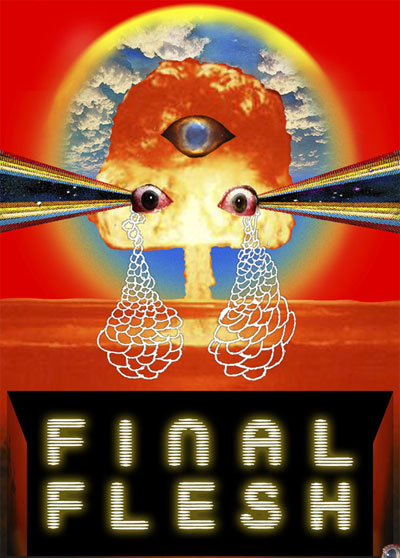
Comedy has always been about cruelty to some extent — after all, the pratfall, the pie in the face, and the insult are three of the oldest and most reliable laugh-getters of all time, and they all involve robbing someone of their dignity for the amusement of others. But the notion of the prank as entertainment doesn't have quite the same history; while funny stories that involved tricks played on others have been common enough through the history of literature, theater, and filmmaking, it wasn't until Allen Funt created the TV series Candid Camera for the fledgling ABC network in 1948 that someone struck upon the idea of tricking someone into making a fool of themselves purely for the purposes of getting a laugh. Since then, the prank as folk art form has been firmly established. Ashton Kutcher dressed up Candid Camera in a trucker hat and an ironic '70s rock band T-shirt, called it Punk'd, and made it a hit all over again.
Crank phone calls went from a private source of adolescent amusement to a record-biz phenomenon when a pair of guys calling themselves the Jerky Boys starting selling tapes of themselves annoying perfect strangers and discovered there was a ready market (the notion even crossed over to the movies with the release of The Jerky Boys Movie and television with the show Crank Yankers). And Johnny Knoxville proved that millions of people are willing to watch grown men talk one another into hurting themselves by turning Jackass into a growth industry.
But Vernon Chatman has taken high-concept entertainment pranking and brought it to a new level with the release of the video feature Final Flesh, in which the prank is being played not on some hapless individual, but on the people actively participating in the creation of the movie. In the history of prankster entertainment, Final Flesh has its most direct precursor in "Blind Man's Penis", a curious little record that was the work of underground musician John Trubee. Trubee was between steady gigs and working at a convenience store in 1976 when, while on the late shift, he was flipping through a tabloid newspaper and saw an ad for an outfit called Nashville Co-Writers who claimed they could take your lyrics, set them to music, and get them recorded. Hoping to get an angry rejection letter, Trubee quickly tossed off a surreal and offensive diatribe including lines like "Warts loved my nipples because they are pink/ Vomit on me baby, yeah yeah yeah." However, after mailing his vile lyrics to Nashville Co-Writers, he received a form letter saying they'd be delighted to arrange and record his lyrics…for a modest fee of $79.95. Trubee forked over the dough, and several weeks later received a cheap, minimal recording of a simple country-style melody with one Ramsey Kearney singing Trubee's bizarre lyrics in a manner that suggested he was struggling to sound casual while stifling his bafflement. Kearney's performance also proved that someone had read the lyrics before the recording session — the original chorus, "Stevie Wonder's penis is erect because he's blind" was changed to "A blind man's penis is erect because he's blind," presumably to avoid possible legal action. Trubee released the recording as a single in 1982, and it became a minor hit on progressive and college radio stations not put off by the vulgar lyrics.
Vernon Chatman has taken this concept and raised it to the next level, moving from a three-minute song to a full audiovisual onslaught. Chatman is a comedian, actor, and comedy writer best known as a co-creator of the cult-fave TV shows Wonder Showzen, a scabrous parody of children's television, and Xavier: Renegade Angel, a send-up of fantasy fiction and New Age philosophy decked out in supremely cheesy digital animation. (Chatman was also the voice of Towelie, the constantly stoned talking towel on South Park.) Chatman became aware of several adult entertainment companies who specialize in making custom fetish videos — the customer submits a scenario, and for a fee the producers will hire actors and a crew and create a video from the script. Not unlike Trubee, Chatman wanted to see what would happen if he took these custom porn producers out of their traditional comfort zone, so he wrote a screenplay and divided it into four parts, sending each to a different company.
However, while Chatman's script was full of bizarre situations and dialogue that weaves back and forth between pretentious and absurd, the story doesn't feature any sex, and Final Flesh, stitched together from the results submitted by the four production outfits, is a 70-minute document of people who put idiosyncratic erotica on film wrestling with characters, dialogue, and someone's off-kilter notion of "art."
Final Flesh reads like the work of some painfully pretentious college freshman of the 1970s or '80s, full of deliberately overblown and out-of-place dialogue and situations that are as bizarre as they are improbable. The basic idea is simple enough — a family of three are at home, having heard the news that their community is soon to be hit by an atomic bomb, and after father decides they should stay in their home and die with dignity, he banters with his wife and teenage daughter about what's about to happen and what they could expect if they somehow survive the blast. But Chatman dresses up this framework with remarkable "huh?"-inducing dialogue and freakish set pieces. Imagine anyone trying to recite the following:
"You're going to clean up the cosmos yourself!"
"I'm raising money to provide subtext for the poor."
"We're trapped in nature's infinite expanse! I can't breathe!"
"My head's a dream in a pillow! The bones of the air are breaking!"
"It says the entire universe has been killed in a Spanish boating accident."
Then there's the bit where a woman gives birth to a melon, and later her daughter spawns a steak. A woman bathes in liquid from jars labeled "TEARS OF NEGLECTED CHILDREN" and "ANGEL BLOOD." A door bears a sign reading "Psycho-Sexual Burn Ward." God sends the family messages via notes slipped under the door. A toilet seat is emblazoned with the slogan "LOCAL SPARROW LICKS SLAVE LIP." A woman pulls a block of cheese from her husband's trousers and suggestively grates it, with the filings spelling the word "Nature" on the floor. And that's just the tip of the iceberg; anyone who dared to take Final Flesh seriously would probably conclude that they'd stumbled upon the most ridiculous piece of post-apocalyptic symbolism ever written, and when Chatman entrusts his writing to people who, to put it charitably, don't usually deal much with dialogue or character development, the results are very special indeed.
What makes Final Flesh all the more disorienting is that each of the four acts has a look, feel, and personality of its own, adding to the alienation effect of Chatman's gambit. The first part features three African-American actors and was shot in a small apartment; father is strong and solid, mother is patient and soft-spoken, and their daughter delivers her dialogue so flatly that it's hard to say what she was trying to do. Part Two moves to a large beach house, with dad seeming goofy and petulant, mom looking and acting like a sexy L.A. earth mother, and the daughter sarcastic and purposefully blank, with died pink hair and a demeanor suggesting porn's answer to Daria Morgendorffer. The third act, seemingly shot in someone's living room, is easily the sleaziest; off-camera prompts to the actors are occasionally audible, the cast struggles to trundle as much nudity and pseudo-sexual action as possible onto the screen, and the three actors are uniformly awful (though the daughter's grating jail-bait persona hits the low ebb among the cast). And the final segment is the one where one imagines the producers had some idea they weren't doing a typical fetish reel; the lighting is moody, a small amount of care has been put into the camerawork, costumes, and set decoration (as opposed to nil for the other three acts), and the players, who are attractive, seem to have learned their lines in advance and deliver them with some conviction (which doesn't make them any less silly); the finale is good enough that it looks like a ringer compared to the ineptitude of the other reels.
The core theme behind Final Flesh is "bad screenplay produced badly," and it provides a certain twisted fun on that level, but the one consistent element that ties these four segments together is the profound disconnect between the cast and the material. While Chatman has given the performers dialogue and situations that would be all but impossible for most actors, these low-rent porn stars are put into the wildly uncomfortable position of trying to play this as written while finding some sort of erotic undercurrent in this stuff, making the not unreasonable assumption that, like their other clients, the guy who wrote this is supposed to be getting off on it somehow, even if the sexual component of the story is as muddled as the rest of the narrative. When the daughter is dared by the Supreme Being to strip near the end of the second act, the actress's demeanor practically screams "Finally!" And in the third act, the cast seems both bored and confused by the dialogue, springing to stilted life only when someone is supposed to take off their clothes or display some sensual enthusiasm, leaping into action like drowning men grabbing at a life raft (and pushing this closer to hardcore than in any other segment of the film). In Final Flesh, Vernon Chatman has taken 12 people who bring erotic fantasies (often too eccentric for the mainstream porn market) to life, and given them a script that they seem to regard as a sort of puzzle, determined to find the turn-on that lurks amidst the spaghetti, the shouting, and the stuff written on their foreheads. The result is a sort of soft-porn snipe hunt, and if they never find the fictive beast, watching them chase it is just as entertaining here as it was when you pulled that prank on the younger kids at summer camp…though hopefully none of them did anything suggestive with cheese along the way.
THE big inevitable BOMB is about to land on a family of three, throwing the very fabric of their balls to the wall...reality howls for mercy...fear strangles terror...the bones of the air shatter into fire.
(Genuine smutmakers were paid to earnestly interpret these sexxless spiritual wizard droppings and more...)
By Sean P. Means, The Salt Lake Tribune
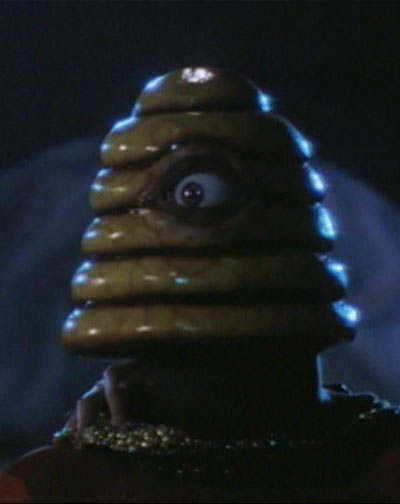
Most Sunday mornings, downtown Salt Lake City is so quiet that someone could stand in the middle of Main Street for several minutes without being disturbed by a passing car.
But on one recent Sunday morning, panic filled the air at the intersection of Main and 200 South. People were shrieking, running hysterically, casting terrified looks at the skies.
The spaceships were landing. The alien invasion was beginning.
Why is this galactic peril only now coming to light? Is the government covering up this alien threat? Who knows the truth behind this cosmic mystery?
Trent Harris knows. After all, he concocted the whole thing.
'There's a flying saucer,' Harris tells the crowd in a matter-of-fact way. 'And where it is is basically right here,' he adds, raising his hand right above the lens of his ladder-mounted camera.
Harris is directing some 30 extras -- dressed in everything from work clothes to prom dresses -- to scream and scurry on cue for scene in his new movie, the science-fiction comedy 'Plan 10 from Outer Space'.
This is guerrilla filmmaking, shooting fast and loose. Anyone can get into the act. When a couple of unsuspecting pedestrians walk by, Harris calls to them: 'You guys want to be in the shot?'
Harris began writing 'Plan 10' after completing his first film: the oddball comedy 'Rubin & Ed', about an introvert (Crispin Glover) who enlists a hapless salesman (Howard Hesseman) to bury his frozen cat in the Utah desert. Harris, who grew up in Utah and worked in KUTV's news department before going to Hollywood, made 'Rubin & Ed' in Salt Lake City and near Hanksville on a $1.25 million studio-funded budget.
'Plan 10 from Outer Space', on the other hand, is an independent production, made almost completely with Utah talent. The budget is much smaller: about $60,000 to $70,000 in cash, plus deferred payments and donated services, Harris says.
Harris says he wanted to do a film about his hometown of Salt Lake City, a place with more eccentricities than its residents sometimes want to admit.
'Salt Lake has an image, and a lot of people are embarrassed about it,' he says. 'It's time to quit being embarrassed about this place and start celebrating how wonderfully wacky it really is.'
The script's origins sprang from Harris' interest in the early history of the Church of Jesus Christ Latter Day Saints [sic], 'the history that the church never tells you when you're in the church -- which is far more interesting than the stuff they tell you. If they had told me all this stuff, I would never have quit.'
'Plan 10' is pioneer history reductio ad absurdum. The film tells of a mad Mormon prophet named Norman Talmage who buried the mystical Plaque of Kolob -- which told of an alien conspiracy to conquer the Earth -- near the shore of the Great Salt Lake. Talmage believed the Angel Moroni, who gave the golden plates of the Book of Mormon to Joseph Smith, was really an alien from the planet Kolob.
'Historically, I have tried to keep it very correct,' Harris claims, tongue somewhat in cheek, 'which may sound like science fiction to people who aren't Mormons.'
[Leading lady Stefene] Russell says her 'Plan 10' character, Lucinda Hall, is an earnest woman who writes bad poetry. When Lucinda turns her hand to journalism, she learns about the myth of Kolob. She also discovers that aliens in beehive-shaped spaceships, led by a character played by Karen Black, will land on Earth to establish a female-dominated society in Utah.
'She has to let the world know about this diabolical conspiracy', Russell says.
'"Plan 9" is supposedly the worst movie ever made,' Harris says. 'So what are they gonna say? 'Not as bad as ["Plan 9"]' or ar they going to say it's worse? That would be great.'
Harris hopes to get 'Plan 10 from Outer Space' shown at next year's Sundance Film Festival, and the film may premiere in February at Salt Lake's Tower Theatre (where Harris' hand-print is immortalized in concrete).

Look! He likes them!
Likes them? The boy's Blob loves them! Jellybeans, that is. In every flavor under the subway. Like Vanilla. Apple. Tangerine. Cinnamon. Cola. Coconut. And more.
Like many boys in the twenty-first century, the boy has a buddy from outer space. This one's from Blobolonia - a place where an evil emperor makes everyone eat only marshmallows and chocolate. In fact, for the emperor, healthy things like vitamins are poisonous.
Blob (his full name is Blobert) came to Earth looking for someone to help him defeat the evil emperor. That's how he met the boy.
To defeat the evil emperor the boy and Blob will need a goodly supply of vitamins. And to get the vitamins, they'll need money. To get money, they'll search the underground caverns for hidden treasures and diamond stones.
So what's a boy to do? Just whistle! (That'll call Blob.) Then feed him jellybeans.
You see, the boy miraculously discovered that not only does Blob love jellybeans but that different jellybeans turn Blob into different shapes. And that those shapes can be used to get through many otherwise impossible situations!
With his repertoire of shapes, Blob can help the boy overcome even the most outrageous obstacles - as long as Blob gets the right flavored bean.
In fact, with enough jellybeans in enough flavors, anything is possible.

By Walt Disney, From Phi Delta Kappa International, May 1954

Walt Disney and the Multiplane Camera
An unfunny thing about humor is that you can't think about it very long without becoming serious. And maybe you can't be ponderous about human affairs and behavior very long without getting the giggles. If this seems inconsistent, it is only because the sober and the silly sides of our human struggle for survival and for perfection lie so close together.
[That great internationalist, William Shakespeare wrote in The Winter's Tale, "Let's be red with mirth." This pale, anaemic world needs humor-man's neglected sixth sense. Humor transcends language barriers. A favorite international story told in many tongues relates the tale of the dog that went from East Berlin to West Berlin. "Are you well fed?" asked the other dogs. "Yes," replied the visiting dachshund. "Are you bathed?" "Yes, daily," replied the visitor from the Red sector. "Then why did you come here?" queried the western dogs. "Oh," said the visitor, "I just wanted to bark."-C. A. De Y.]
Laughter is a frown turned upside down. Any sharp and unexpected twist from the normal gives us a sense of relief, of superiority. It makes us glad we aren't on the spot some poor unfortunate has gotten himself into by his stupidity. I am presumed to know something about humor as an international sixth sense because I've been dealing it out in one form or another for over a quarter-century. But a lot of things about laughing matters still elude definition in words. Every writer, performer, and producer of comedy ruefully knows that the essence of fun cannot be bottled and then released like some genii at a magic word.
True, there are certain formulas for provoking hilarity. Gagsters and jokesmiths practice and sometimes belabor many of them. And the capacity of audiences to enjoy them seems boundless. But the humorous impulse and most of its finest works are emotional and intuitive, rather than rational - are truly based in a sixth sense.
What I've learned about the nature of fun has come largely from the adventures of Mickey Mouse, Donald Duck, Pluto, Goofy and other members of our cartoon family, and how their antics have been received by audiences. They have been our test cases.
Similarly, our character creations and their behavior in feature length animations have been most informative. For these longer fables, generally the humor has been more gentle. It deals more with awkwardness, especially the kind which in the antics of young floundering animals becomes "cute." The compassionate laughter which such actions arouse is probably our most admirable human response to what is broadly ludicrous.
Fable animals, which are never quite animal nor yet quite human-aping people; young persons emulating their elders; clumsiness, forgetfulness, attempts at dignity; physical instability; pretentious immaturity, as compared to the viewer's own smug self-assurance - these things are invariably funny to all audiences, to all races.
Thumper helping Bambi on the slippery ice; the Dwarfs forcefully giving reluctant Grumpy a bath and Dopey running back for an extra kiss from Snow White; the mice besting the cat in Cinderella; the fumbling of the fairy Godmother for her magic wand in the same picture-these are examples of what we try to get into every production to get chuckles as well as guffaws.
More recently, the live animals in True-Life Adventures have added much to our lore of laughter. For the need to clown seems to pervade all nature. One such display of the comic spirit in the animal kingdom which comes to mind is the riotous dance of relief indulged in by the female elk and their calves when they reached the end of a hard and hazardous migratory trek in The Olympic Elk. Audiences have always chuckled at that mad gyration in the snow, and at the contrast with the lordly males who scorned such undignified behavior. I am convinced after seeing many such incidents that animals themselves, as well as human audiences, recognize such actions as primitive fun.
Antics of animals support the belief that comicality is a basic principle of universal life when it reaches the self-conscious level. Humor and its opposite are like the complementary elements of good and evil. Like the balance of hero and the villain in the dramatic arts. The expression "comedy relief" in theatrical entertainment has its roots deep in serious needs. Without the relish and the practice of humor in all its various shades and degrees, we would become woeful, spiritless creatures indeed. Fun and having fun is vital; it makes life with its inevitable burdens tolerable. Often I think it may provide the closest of all human bonds. But, efforts to pin down the exact nature of jibe and jest have challenged pundits, professional fools, antic clowns, studious gagmen, comedians of every kind and medium. Often the result is a big headache.
The man who could capture the sprite of laughter and win her lasting favor, would become one of the richest and certainly the most envied of human beings, so highly treasured are her gifts.
However, humor does have an operable technique. There are certain more or less reliable clues. And, if they all worked out every time, we would understand more about human nature than any wise man thus far has comprehended.
This we do know: drollery is a matter both of the spirit and of the flesh. It can make the soul soar with delight as well as roll the body "in the aisles," as the expression is. It can reveal the noblest and the basest levels of the one who laughs, and what he laughs at.
Laughter has lately assumed a new importance in human relations. With the growth and spread of mass entertainment, like the movies, and the increased facilities of communication, humor has become an article of international merchandise. It is one of America's most important exports. But when we assume that the making of fun in communicable ways has a common appeal to every race, we must qualify it rather sharply. Humor has many modes, many shades.
It reflects racial and regional cultures. What may cause a Latin to howl with glee may leave a Nordic colder than his frigid zone.
There are latitudes and longitudes of laughter. Only basic comedy, expressible in simple terms, can meet the requirements of a common denominator. This has to be visual, generally, needing few if any words. Pantomime is its medium, action its mode. If it deals with human beings, it must draw on the common characteristics of humanity itself, well beyond any specialized traits of race, culture, and habit.
In the animal kingdom, as it is presented raw and authentic in True-Life Adventures, acts of comedy as well as of passion tell their own unmistakable meaning in aboriginal pantomime. The defiance of little Skinny, the ground squirrel who contemptuously pushes dirt into the face of the Gila monster in The Living Desert needs no words to be appreciated by any folk on the face of the earth. Mickey Mouse, and Donald Duck, and all their cronies of our cartoon world are creations out of that "sixth sense" through which so much humor is universally understood.
I cite Mickey because he has been for over 26 years my guinea pig-if he'll pardon the expression-in this serious business of amusing people on the screen. And Donald-well, I know him pretty well too, although he sometimes gets out of hand and turns on us in outraged dignity. Comedians are often very touchy that way.
One thing must be borne in mind when employing humor as an international language: it may be robust, candid, hectic, burlesque-even violent, if the subject permits-but never vulgar in taste or treatment. The nearest one can come to that is to apply slapstick to elemental human relationships of anger, greed, vanity, pompous arrogance, and commonly experienced domestic incident.
Some delvers into comedy tell us that man laughs most derisively at the follies of his neighbors. This, they contend, is the cackle of a mean emotion, unworthy of civilized people. I have not found it so. From my long observation of moviegoers, I am sure that the great mass of Americans, at least, are laughing most heartily at their own foibles when they seem to be howling loudest at the mistakes and awkwardness of others. To me, that seems wonderful. It demands a high respect for the power and the value of humor, and humility in its use.
The laughter of common appreciation has much compassion in it. If farce, slapstick, and travesty jibe at our follies and seem sometimes rather heartless, there are other kinds of merriment less caustic, more gentle but equally potent.
Human misfortune, no matter how ridiculous it may seem, cannot be shown in excessive degree in the name of amusement. For there cannot be laughter at genuine human misery, except by the most cruel of men - and the most savage of races.
The study of wildlife in our nature pictures has indicated a vital purpose in basic humor, especially the kind of fun which deals with the mockery of imperfection. The instinct for comedy, I have come to believe, operating in the animal kingdom as in human nature, is part of the mechanism for survival.
By its very nature, derision of faulty behavior sets up staidards of approved conduct. Whoever obeys them lives longest and most comfortably. In politics, in public affairs, we long ago learned that the wrongdoer, the misfit, the malfeasant, can be curbed with the lash of laughter better than by any other weapon. Here it operates as a potent means of social and democratic survival.
Lightly though we may regard it, laughter is a priceless coin in human traffic and international exchange. I think it is not extravagant to say, finally, that people, even nations, leave characteristic impressions; are judged by what they laugh at and with-and what they do not laugh at.
By Thomas Transparent, 2004
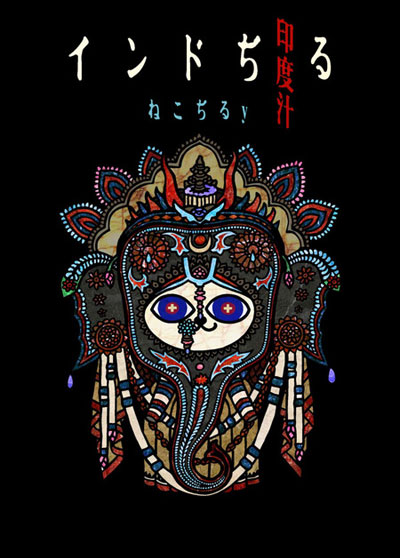
The 'Hep 5' shopping mall in Osaka is a good place to avoid if you're self-conscious about age: nearly everyone inside the chromed-over complex is in their teens or very early 20s, smirking knowingly and swaggering around with bags full of import fashions. Actually, given the infinite number of other ways to enjoy your free time in Osaka, there's no real reason to go there at all - excepting maybe the spectacle of watching high school girls claw at each other for the remaining Snoopy plushes in the store which boasts East Japan's best selection of Peanuts-themed merchandise. It is morbidly funny watching them go at it; suddenly realizing that they can swear like the most two-sheets-to-the-wind businessman, and be twice as vicious in their relentless pursuit of original merchandise featuring Charles Schultz' sagacious beagle. Winning a life-sized Snoopy plush from an arcade is also, for the young professional guys, a chivalrous act on par with slaying a dragon for their sweetheart. Only after witnessing the objectification of Schultz' most enduring animal did I start entertaining curiosities about a truly Japanese counterpart: a pragmatic cartoon animal which spoke exclusively to the recessioned, deflated country; without any political grandstanding and with an impenetrable innocence. It took weeks of digging through formulaic Japanese manga, written about every specialty subject from fly-fishing to - that's right - making manga, to find what I was after. An obviously troubled, but talented lady going by the pen name of "Nekojiru" ('cat soup' in English, her real name is Chiyomi Hashiguchi) caught my eye with a pair of kindergarten cats named Nyako and Nyata.
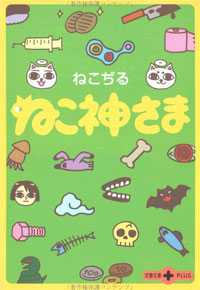
Nekojiru's twin heroes carry the simple, practical wisdom of Schultz' best creations along with them, usually closing strips with contented 'that's-the-way-things-are' observations and the promise of brighter days ahead. However, the situations where they apply this wisdom are more suited to, well, the Grand Guignol than Snoopy's doghouse. Just a short sampling: they observe the fatal beating of a homeless man posing as an FBI agent in order to get a cheaper box lunch (the stubbly box lunch vendor is a former yakuza thug.) After getting bored of a hide-and-seek game with the neighborhood pig (a recurring victim in this strip), they set fire to his hiding place (a pile of leaves) inadvertently and enjoy his roast flesh. In their Christmas special tour-de-force, Nyata and Nyako ride on the back of a stolen donkey, blasting a group of door-to-door carolers with an acetylene torch (which itself was stolen by the kids' father - who felt guilty for blowing all the Christmas money on plum wine earlier.) They rarely set foot inside a school, maximizing their play time and their exposure to urban low-life. From time to time, the ultraviolent kitties use their talent for mayhem to good ends, like rescuing a group of sweatshop seals from their human, junkie slavedriver. The cats are modeled after the 'maneki-neko' good luck cats that Japanese shopkeepers place in their display windows for good luck: snow white with unblinking, headlamp eyes and eternal poker faces.
Nekojiru seems bent on confronting a Japanese audience weaned on ineffectual slapstick comedies and cuddly corporate mascots. Her parodic soldering of these elements was a gamble in a country which has no word for "irony" in its dictionaries, but it was well-timed. After the twin nightmares of the Great Hanshin earthquake and the Aum Shinrikyo cult's gas attacks eroded away the population's trust in nature AND mankind, it was high time for some comics which would approach the cruel new world without completely neglecting the deep-rooted Japanese love of childish antics. Nekojiru developed a huge fanbase of teenage girls, many of whom are still posting adulatory reviews on the Japanese Amazon website, with proclamations like "this book is like taking medicine!" and rhetorical questions such as "don't you remember the time when YOU innocently killed an insect?" Nekojiru could have become a model for young, independent female artists looking to take manga outside of the relationship and light humor genres. However, this wasn't to be: Nekojiru committed suicide in the May of 1998. Coupled with the death of veteran 'nonsense gag' artist Yasuji Tanioka from cancer one year later, a pre-millennial hole was blasted in Japan's independent comics industry that has yet to be repaired.
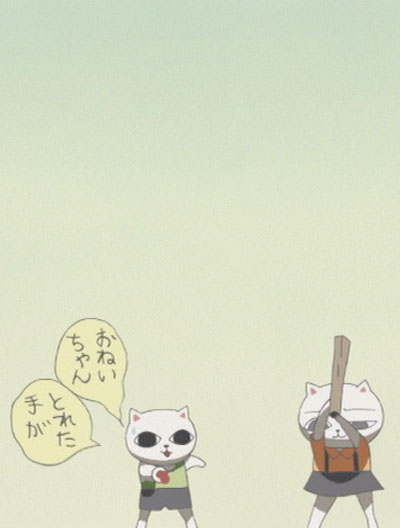
Nekojiru's career and pen name were both kickstarted by a crude debut strip, set in a noodle shop run by a surly tomcat. Another feline customer happens upon his shop and harangues him to help her with her restless, uncontrollable kitten. After repeat warnings of "this is a noodle shop, not a doctor's!" the tomcat decides that the best course of action is neutering the kitten. Said kitten gives up the ghost in the next panel after some haphazard knife work, and the only recourse is to make it into cat soup. To be honest, it's not the funniest gag in Nekojiru's bountiful bag of tricks, but it was enough to impress Garo magazine. The monthly Garo, by the early '90s publication of this strip, had already survived twenty odd years battling the weekly comics digests and their gender-specific, safe-bet tales of dating and baseball to become the primary lifeline for comics infused with contemporary social issues. Nagai Katsuichi, who was at the editorial helm of Garo since its '60s inception, and had survived both combat in Manchuria and the post-war struggle to start an independent publishing house (Seirindoo), wasn't about to lose his composure over some coarse feline follies. Nekojiru's eponymous strip found a happy home in Garo over the course of the 90s - and while it's something of an Easter egg hunt to find these issues in retail outlets, they still rest snugly on the shelves of Hiroshima's fine manga library and on the racks of all-night manga reading rooms. And deservedly so: few other titles on the global comics scene of the previous decade, save maybe Miguel Angel Martin's 'Brian the Brain', have mixed tender innocence and wanton destruction with such ease. In her strips, humans and animals share a chaotic world in which they may be peacefully sharing a meal one moment, and devouring each other the next. Her characters even manage to survive without digits (many of them resemble Pillsbury doughboys on a bender).
While Nekojiru was unquestionably a unique presence in the manga world, her work didn't really gain prominence until her husband and collaborator Hajime Yamano began illustrating the skewed visions that she had written in her memo books and dream journals. A quick side-by-side comparison of the debut strip with later work inked by Yamano shows a slight, but substantial difference: Nekojiru's wobbly, caffeinated inking gives way to Yamano's perfectly squared away, clean, vibrant panels. Which is not to say that Nekojiru was a completely slovenly artist, but it is the Yamano versions of her characters which made the grade to be immortalized as a line of merchandise. Like the mega-selling Hello Kitty products, Nekojiru's cats lend themselves well to babydoll shirts and PVC handbags. At times it even seems like the two mischievous, vocally disobedient cat progeny in Nekojiru's strips are little more than a parody of the characters in 'Kitty-chan's' idyllic dayglo universe, solving all their curiosities about the outside world with experimental acts of violence: sending uppity grasshoppers to makeshift gas chambers, or beating up God himself when they don't understand his parables.
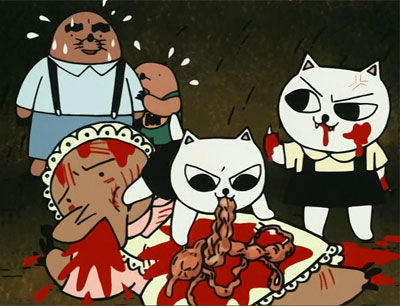
Hajime Yamano still labors on under the commemorative pseudonym of 'Nekojiru Y', but without the acerbic storylines of his former partner. The books penned under the Nekojiru Y moniker are, sadly, only similar to the previous strips in cosmetic appearance. Nekojiru's trademark lamp-eyed cats travel through lots of exotic locales in adventure stories like "Indo Jiru", and feature plentiful 3D touch-ups, but no further leaps forward in the writing style that Yamano has coined 'violent relaxation'.
For all the hype that followed it initially, Nekojiru's suicide at the age of 31 was no anomaly within the Japanese comics world. Another prodigious artist of her generation, Hanako Yamada, hurled herself from an 11th-floor apartment window in 1992 (she was only 24, and had made her professional debut while in her third year of junior high school.) Yamada's hypersensitivity, nerve damage and experiences with school bullying came to the fore as her final journals were published in 1998 by Ohta Books, the hip Gen-X publisher du jour who had released a "Complete Manual of Suicide" 5 years earlier. More likely than not, Ohta acknowledged the influence of Yamada's melancholic, waif-like characters on their newer crop of artists. A quick look at Yamada's resumé shows telling titles like "God's Bad Joke" and "Empty-Headed World", with her listless, disembodied face on the book covers betraying even more about her emotional state. In an editorial review of a "God's Bad Joke" collection, it's suggested that her thin, meticulous pen strokes were symptomatic of a series of nervous breakdowns (note to net researchers: beware of a peppy member of Osaka's famous Yoshimoto comedy troupe, who shares her name).

For the time being, the best insight we may have into the minds of these artists are 1st hand accounts like Hanako Yamada's journals and Nekojiru's reproduced notebook scrawls, which pop up from time to time in Nekojiru anthologies (all of which are named after Japanese foods: there's 'Nekojiru rice crackers', 'Nekojiru udon noodles' and so on). Nekojiru's diary entries reveal a very one-sided fascination with communication breakdown and bodily malfunction, objectively noting every unpleasantry from vomiting dogs to accident victims. These documents will still be disappointing for anyone looking for a sense of closure - they suggest, rather than state outright, the reasons for these artists' untimely departure. The same can also be said of encounters with Japanese comics fans on the street. During the last few years in Osaka, I found it nearly impossible to get anyone to articulate on Nekojiru's death beyond the stock utterances of "she was crazy!" and "hmmm…Nekojiru is Nekojiru." Whether out of respect for the dead, embitterment at having been let down by an artist who could have bloomed into a genuinely potent media presence, or a combination of the two, people are not too eager to talk at length on the subject.
While there is something of a 'suicidal manga artist' archetype in Japan, it should be emphasized that there's no easy comparison to, say, our cult of suicidal rock stars. Just the absence of a real hard drug scene in Japan is enough to separate these two planes of unexpected stardom. 'Societal pressure' is the nebulous term usually attributed to the manga suicides, but what kind exactly, and who within society is most responsible for applying that pressure?
The Japanese manga industry, with small exceptions, works like this: usually a writer courts a weekly magazine first and is contracted to do a weekly serial work. The weeklies, with unassuming titles like 'Shonen Sunday' and 'Young Jump' are phone directory-sized slabs of multi-colored, cheap newsprint. As such, they don't do as much justice to the respective artists' styles as the glossier single-artist anthologies - these come after a serial has been in enough weekly issues to warrant a full-volume review. The same publishers who issue the weeklies also hold the rights to releasing artists' work in volume format. The volumes are shelved in the shops according to stereotypical male/female interests, and are then subdivided into publishers' sections rather than genres. In the sleek 'MangaKan' shop where I first found Nekojiru's anthologies, there is another section simply marked 'comics'. At first it seems absurd to see a section within a comics shop labeled as 'comics', but on closer inspection you begin to see why: therein lies a mixture of Western artwork, manga on imprints too small to warrant their own section, and subject matter still considered too marginal/controversial: Suehiro Maruo's slashing mockeries of heroic nationalist art, or Takashi Nemoto's tales of superhuman semen.
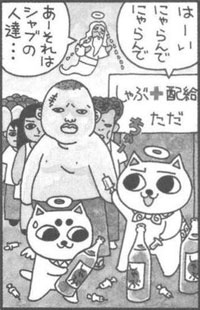
The Japanese manga artists face the same struggles to make deadlines that can be expected anywhere, although the sheer volume of work that must be done in any given week can make even the staunchest artists have second thoughts about their career: anything up to 20 letter-sized pages of high quality drawing every week until the artist's series fizzles, or is overtaken by another serial work. Rapid burnout is common, and suicides from previous decades have resulted from this kind of workload. Still, the direct linking of a heavy workload to termination of life, without any other contributing factors, seems like too lazy a conclusion to reach. I'd propose a different situation: one in which a Japanese population simultaneously praises its manga as an inimitable cultural treasure, and damns it as a corruptor of traditional values. It's true: 76% of Tokyo residents recently cited comics as being central to the corruption of youth, and even more dangerous to the kids than the internet. This same set of mixed attitudes towards comics extended to a friend of mine, who refused to import the volumes I was missing from the Nekojiru back catalog, on the grounds that "it would be embarrassing for us." I could have sworn this same individual was singing Nekojiru's praises a few months before the fact. From all the limited information that I could gather from such skittish sources about Nekojiru, Hanako Yamada, and other suicidal manga artists, one thing seemed devastatingly certain: these individuals, while doing courageous work on par with the most well-adjusted artists, were of no temperament to last long under such unpredictable critical gear-shifting. They were all reclusive and despondent, in varying degrees, before attaining star status: being thrown to the sharks of critical discourse made their attempts at reconciliation with society into futile homework assignments. Maybe the best illustration of Nekojiru's disillusionment with working in this society is her spirit-crushing short story "Tankobu (head lumps)". Here we witness a youthful monkey who is repeatedly whacked over the head with a mallet, and has the resulting swollen bruises cut off and served as a novelty snack. He keeps a pliant grin on his face throughout the whole agonizing process, only breaking down in tears when his inquiry of "well, I'm tasty, aren't I?" is met with an indifferent "Eh. You're just average," from taste-tester Nyako. If that doesn't characterize society's low opinion of the comics creation process, I don't know what does. Let's hope that future Nekojirus persevere long enough to turn that low opinion on its head.

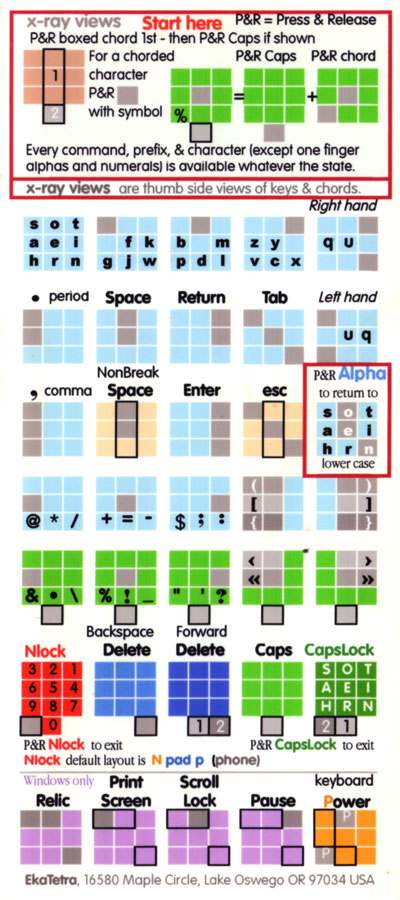


Single handed keyboard for Macs, Windows, and Unix. Does everything a standard keyboard can do with just 12 keys. Use either hand.
